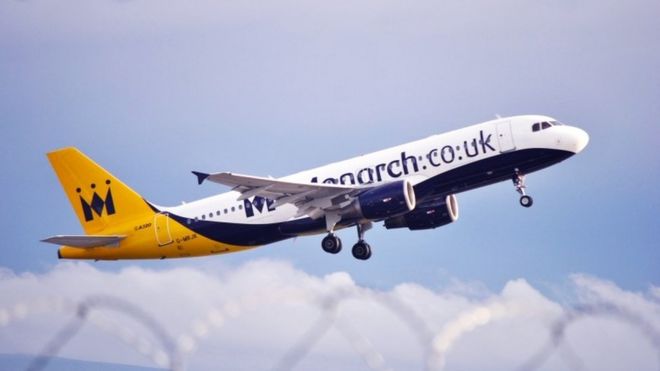Leeham News and Analysis
There's more to real news than a news release.
Boeing’s Bold Ambition, Part 2
Subscription Required
Introduction
Oct. 9, 2017, © Leeham Co.: When Boeing launched the 787 program in 2003, an after-market maintenance program called Gold Care followed.
It wasn’t successful. Few customers signed up for it.

Stan Deal, CEO of Boeing Global Services.
But the lessons learned are important for Boeing’s drive to vastly expand its presence in the global commercial airplane after-market business.
Boeing Commercial Airplanes and Boeing Defense, Space & Security (and the latter’s predecessor, Integrated Defense Systems) provided services to the airlines, lessors and government customers, but now there is a dedicated business unit.
Boeing Global Services was announced nearly one year ago, on Nov. 21. When Boeing reports its third quarter earnings at the end of this month, for the first time revenues and profits for BGS and its predecessors will be a line-item in the earnings statements.
Stan Deal, the CEO of BGS, acknowledged the poor start of Gold Care in an interview with LNC. But from this unhappy experience, Boeing learned what officials hope lays the foundation of a new, robust business.
Summary
- 787 Gold Care didn’t start out well.
- Gold Care is rejigged and rebranded.
- BGS services Airbus aircraft, too.
Bjorn’s Corner: Laminar flow aircraft, Part 2.
October 06, 2017, ©. Leeham Co: We introduced the Airbus “Blade” laminar flow research program in the last Corner. Now we continue to look into what this research is all about.
We will explain the difference between laminar and turbulent flow (really, laminar and turbulent “boundary layer” flow) and discuss some of the work that has been done with laminar flow structures.
Read more
Airbus preparing to hike A350 production rate
Subscription Required
Introduction
Oct. 5, 2017, © Leeham Co.: Airbus is gearing up to increase the production rate of the A350 from 2018’s planned 10/mo to 13/mo, perhaps as early as the following year, LNC has learned.
year, LNC has learned.
The move follows Boeing’s announcement in September that it will increase the production of the 787 from the current 12/mo to 14/mo in 2019.
Airbus is producing the A330 at a rate of 6/mo.
American hopeful Trump Administration will take on Mid-East 3 airlines
Subscription Required
Introduction
Oct. 2, 2017, © Leeham Co., Grapevine (TX): American Airlines officials dodged commenting about the specifics of the Boeing-Bombardier trade dispute when asked about it at the investors/media day last week in this Dallas suburb.
Instead, the general counsel, Steve Johnson, offered up only a general statement supporting the Trump Administration’s hard line on trade.
The reason for this generality is obvious: American, along with Delta Air Lines and United Airlines, is engaged in its own trade war and needs support from the Administration.
AA, DL and UA are battling Big Three airlines from the Middle East over being subsidized and abusing Open Skies treaties. The US carriers want Trump to knock down the ME3, Emirates Airlines, Qatar Airways and Etihad Airways.
Oddly, no question was asked of the American officials about the current state of the battle during the day.
LNC asked American CEO Doug Parker about the issue following the event, however.
Summary
- Recent meeting with US was encouraging.
- No commitment yet from Trump Administration.
- Market conditions don’t matter to ME3, American says
Pontifications: 49 years ago, the first 747 rolled out
Sept. 30, 2017, © Leeham Co.: Today is the 49th anniversary of the roll-out of the Boeing 747-100.
On Nov. 7, United Airlines operates its last 747 flight. Delta Air Lines ends it 747 service this year. Afterward, there won’t be a single US operator of the passenger model.
The 747 remains in service with US cargo carriers Atlas Air, Kalitta Air, UPS and a few others. Globally, British Airways, Lufthansa and Korean Air Lines are among those flying the passenger model.
Ted Reed, one of the writers of TheStreet.com, asked me earlier this month to give some thoughts about the 747. Below is what I gave him; he excerpted some for his column in Forbes. The focus was on US operators.
Bjorn’s Corner: Laminar flow aircraft
September 29, 2017, ©. Leeham Co: Airbus flew its “Blade” laminar flow research aircraft for the first time this week. It’s a project in the European Clean Sky research program.
The “Blade” aircraft is a modified Airbus A340-300, where the outer wings have been replaced with special laminar flow wing sections. We will spend a couple of Corners to understand why this research is done and why it’s important.
Read more
Airbus is working on a 7,000nm A330-900
By Bjorn Fehrm
Subscription Required
Introduction
September 28, 2017, © Leeham Co.: Airbus is working on increasing the range of the larger variant of the A330neo to 7,000nm. The present version, A330-900, flies 287 passengers 6,550nm, according to Airbus.
The range increase, which comes about from a take-off weight increase, is designed to make the A330-900 more of a competitor to the best-selling Boeing 787-9.
But the Airbus 7,000nm is not comparable to the 787-9’s 7,635nm with 290 passengers. The companies disagree on most principles on how to measure an airliner’s maximum range.
 We use our aircraft model to weed out the differences and tell what is the comparable capabilities of the new A330-900neo variant compared with its main competitor, 787-9.
We use our aircraft model to weed out the differences and tell what is the comparable capabilities of the new A330-900neo variant compared with its main competitor, 787-9.
Summary
- The A330-900 is capable of transporting 287 passengers 7,000nm when using Airbus rules.
- When using rules closer to the ones used by airlines, the range is shorter.
- We apply airline rules to A330-900 and 787-9 and compare their capabilities using our performance model.







